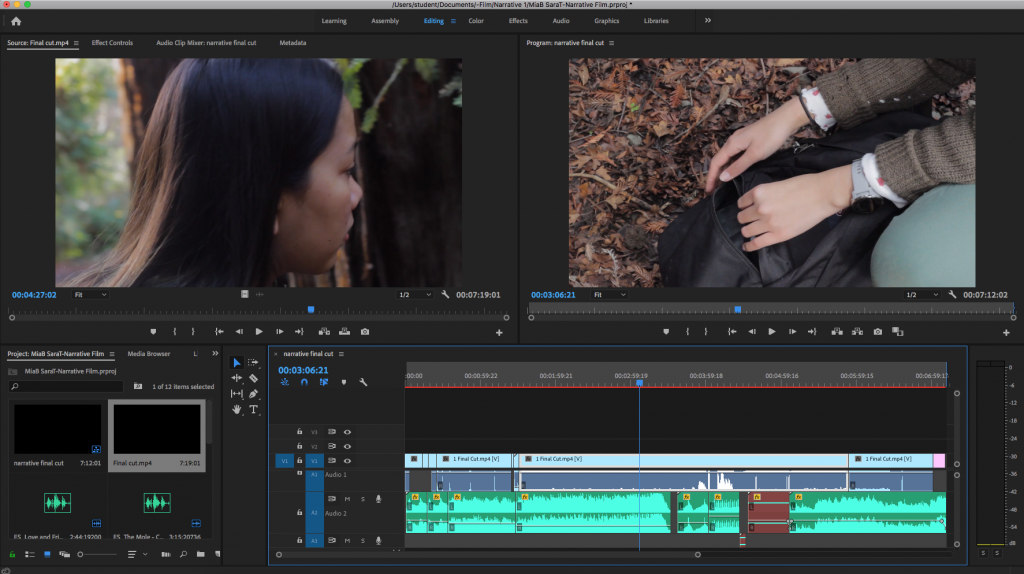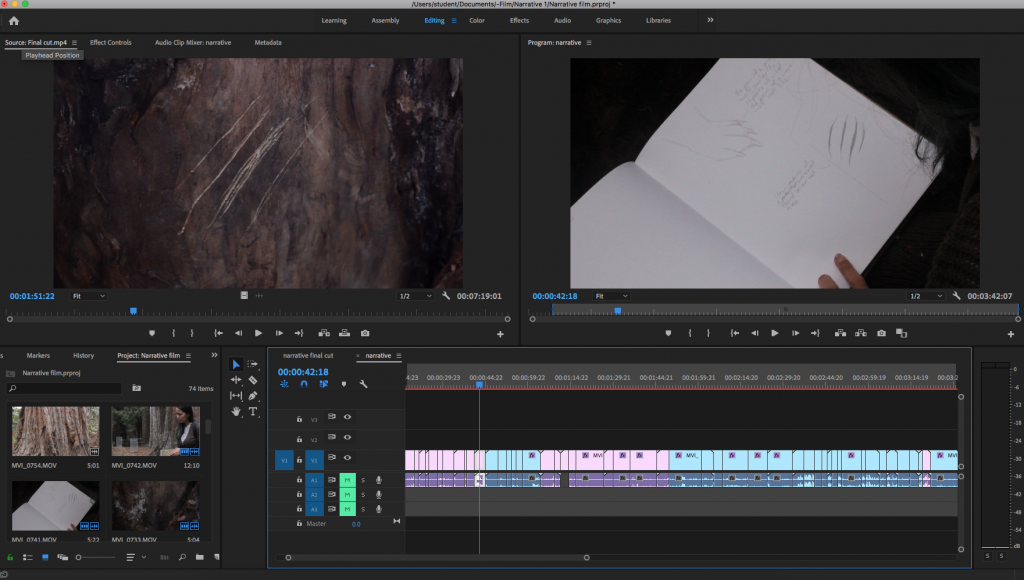Introduction
In the narrative unit, I worked in all three of my classes to tell a well structured visual story. Through many different mediums including film, writing and audio I was able to experiment with different storytelling techniques and technologies that all expanded my storytelling abilities. In this unit alone I was introduced to Wacom Digital Drawing Pads, Adobe Photoshop, Adobe Illustrator, Avid Pro Tools, and HTML/CSS.
I loved being able to try so many different programs to find my storytelling voice. I valued the time we spent on narrative structure (“story is king!”) and how to effectively communicate that structure through the different art mediums. I personally prefer more documentary based work, so I was able to challenge myself with coming up with stories that I was passionate about creating.
Story
In English, we were assigned to write a flash fiction piece about any story we wanted. At first I was very stuck in the storytelling process because I could not think of what to write about. Eventually, after much workshopping, I found a story that I was proud of and I was able to begin writing. The inspiration for my story was based on the feeling of anxiety that I and so many of my team mates get at swim meets. By creating a character that felt this anxiety more intensely than I have experienced I was able to really show my audience what it feels like.
Then in Digital Media we took our stories from English and translated them to a new medium: audio. We recorded our short stories on our audio recorders, and edited the audio file with music and sound effects in ProTools. Recording the audio for my story was a scary process because I had to focus on making my voice very expressive in order to convey the story. I loved adding emotion to each line and emphasizing the parts that I, as the author, saw as most important. The audio version of our story was so cool because it allows the audience to interpret the story the way the author intended.
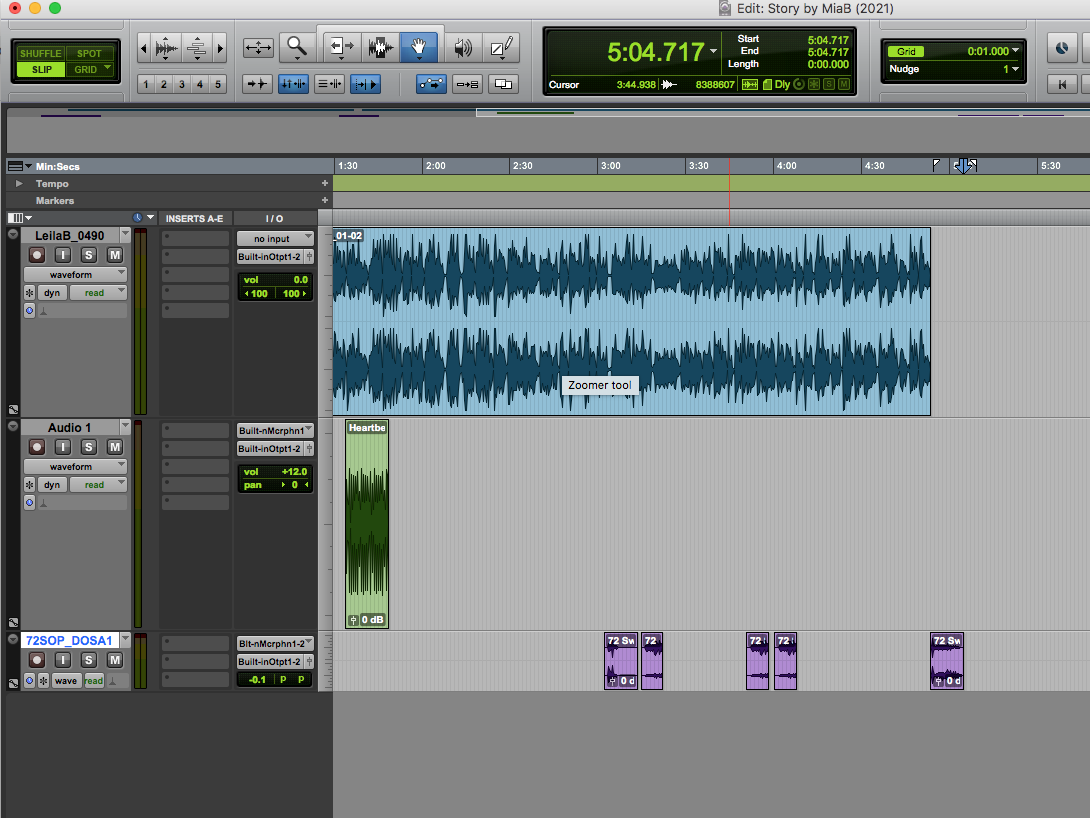
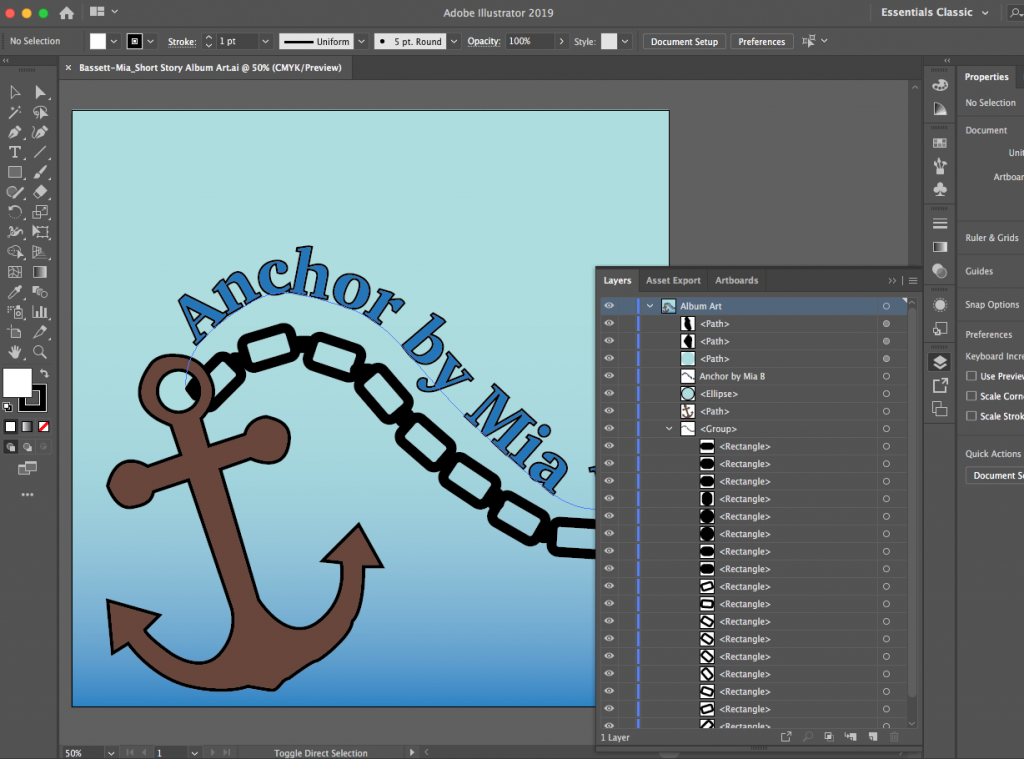
Illustrations
For our Adobe Illustrator project we were assigned to use Illustrator to make any piece we wanted and it would be made into a physical version of our design. With this project I knew I wanted to make something honoring Skylark Ranch, my summer camp, for my camp friends and I. I decided to base my design off the lyrics from our CIT 1 song “Upside Down” by Jack Johnson.
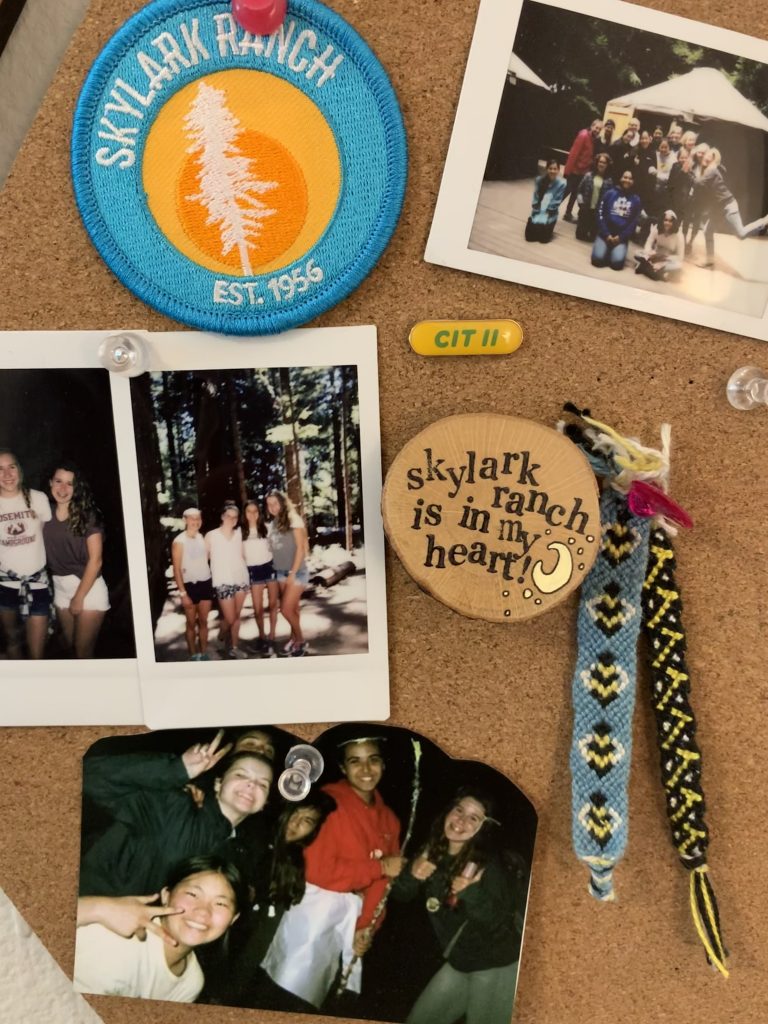
I originally planned on creating a sweatshirt design based on the lyrics “we’ll sing and dance to Mother Nature’s songs”.
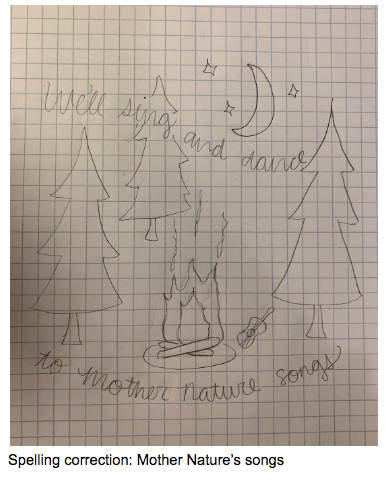
However after I started designing the actual design on Illustrator, I realized that the design lent itself better to an embroidery patch. Creating an embroidery patch also continued the theme of Girl Scouts in my project because Girl Scouts iron on patches to their sashes.
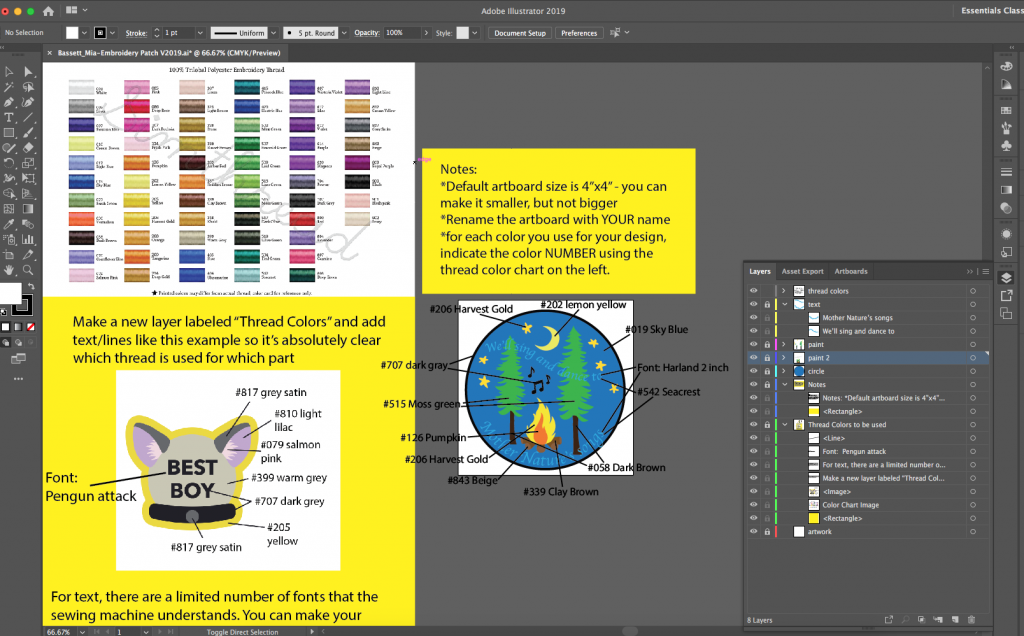
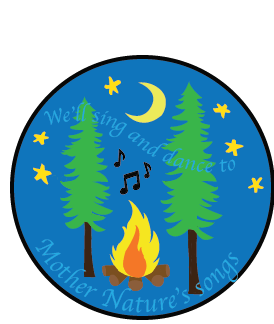
Music Production
The other narrative project we completed in Digital Media was creating a parody song using ProTools. I was really excited by the silly and creative nature of this project, and also the chance to learn more in depth about ProTools because it is such a powerful program. I decided to focus my parody song on how frustrating and demotivating Covid has been for students. Together, my friend and I wrote parody lyrics to Taylor Swift’s “We are Never Ever Getting Back Together”, creating our new song “We are Never Ever Going Back to Normal”.

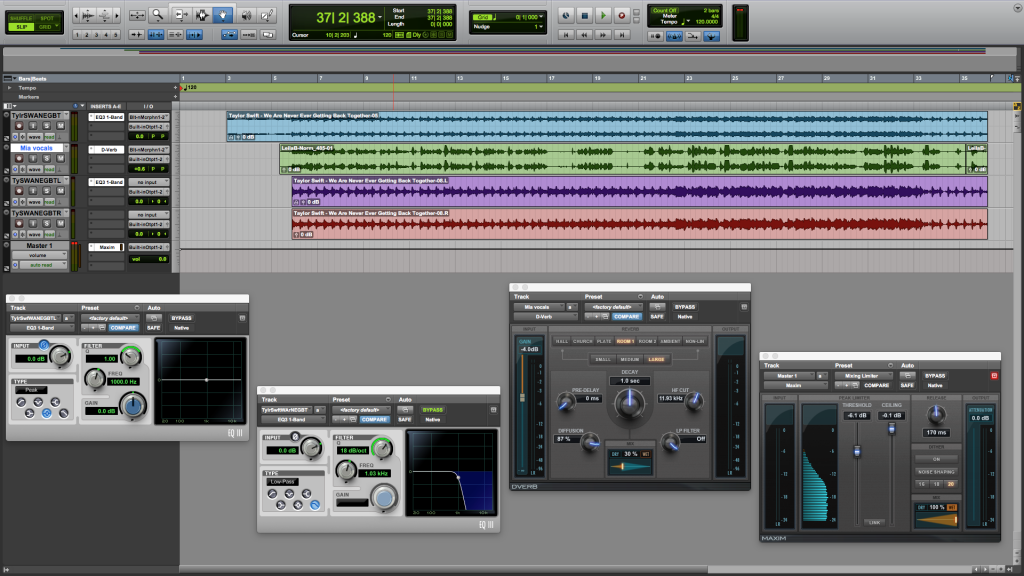
Isolating and removing the vocals from the original song was the most challenging part of this project. I learned so many different techniques I had never heard of before, including bypassing audio, using EQ bands to remove the vocals, and splitting a stereo track into two mono tracks. Then, I recorded myself singing my new lyrics and added them to the instrumental of the original song. Here is the final product!
Film
For film class, our project for the unit was to create a narrative short film. But before we began the main project, we made some short projects based on different aspects of narrative film. This included a scene using Griffith’s pattern, a scene using suspense, and a chase scene. These projects allowed me to get a feel for shooting a narrative film and helped me understand the importance of continuity, pacing, and editing.
When it was time to start our narrative short films, we pitched our ideas to the class. From their we got into pairs and created story boards and synopses for our projects. My partner Sara and I decided to use Sara’s story idea for our film: a teenage girl who is obsessed with magical creatures goes werewolf hunting hoping to finally achieve her dream of finding a werewolf and to her disappointment she only finds a stray dog. But, they are able to connect and she leaves her mission feeling fulfilled and much less alone.
The protagonist of the film is a person who has dedicated lots of time and energy to looking for werewolves. They have been following many guides and books and think that they have finally found a lead, so they go to the forest to investigate. The film begins with the protagonist driving up to the forest anxious and excited to finally find a werewolf. They pack a bag full of tools and hold a guidebook with a map and signs of werewolves as they start to enter the forest. First, they see claw marks on a tree and get very excited because they realize they are looking in the right place and might soon find a werewolf. They compare the claw marks in the book to the ones on the tree and decide that they are the same meaning a werewolf is near. They then continue walking through the forest anxiously and excitedly looking for clues. They see a clump of fir caught in a bush. They frantically compare it to the image of werewolf fur in their book and get even more excited when they believe they’ve found werewolf fur because they are getting closer to the werewolf. The protagonist continues to trek through the forest guided by an increasing hope that they are closer to achieving their dreams of finding the werewolf. They see paw prints in the mud and pick up their pace following where they lead. Finally, they start to hear a mix of growling and other dog-like noises coming from behind a tree and they think they have found the werewolf. Slowly they turn the corner around the tree only to find a tiny dog chewing on a bone. In complete confusion and disappointment, the protagonist and the dog stare at each other for a few seconds. Defeated, the protagonist throws the werewolf manual to the side and sits at the base of the tree. The dog comes to lick the clearly annoyed protagonist and then leaves only to return with their book. The person grabs it and throws it back because they are so upset about being let down but the dog is persistent and brings the book back to them again. The protagonist is so defeated that they begin to warm up to the dog, and they walk the dog back to their car. The dog is scraggly and in need of care, and as they find each other the empty part in their lives is filled. The protagonist lets the dog sit in the front seat, which was previously taken up by their many werewolf guides and novels as the two drive off together. The protagonist has finally found a companion and a real-life relationship instead of a fictional obsession, and they have new priorities for their life.
My narrative film synopsis
Finally, we moved in production and post production where I continued to grow my camera operating and directing skills with our actress as Sara and I worked to produce our creative vision. When it all came together, we were so proud of how it turned out! The most challenge part was probably post production because we could not edit in the film room at Freestyle due to Covid-19. This meant we had to divide up editing roles and constantly send each other Premier files to look over, but we made it work!
